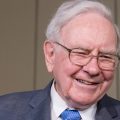The autonomous vehicle race is heating up in Austin, Texas, with Tesla poised to launch its robotaxi service in June, directly challenging Waymo’s established presence. This upcoming competition promises to be a fascinating clash of titans, each with a unique approach to self-driving technology. While both companies aim to provide safe and reliable robotaxi services, their strategies and technological underpinnings differ significantly.
Tesla’s robotaxi ambitions rely heavily on its Full Self-Driving (FSD) system, a controversial technology that has faced criticism for its safety record and reliance on a vast amount of real-world driving data for continuous improvement. Their approach is characterized by a more integrated, in-house system, with less reliance on high-definition mapping and more emphasis on neural networks to interpret complex driving scenarios. This approach, while potentially cost-effective, also carries higher risk, given the inherent complexity of handling unpredictable situations on public roads.
Waymo, on the other hand, boasts a more established and arguably more conservative approach. They have invested heavily in high-definition mapping, meticulously charting their operational areas to provide their autonomous vehicles with a detailed understanding of their surroundings. Their system relies on a combination of lidar, radar, and cameras, offering a more robust and potentially safer approach, although at a higher development cost. Their extensive testing and phased rollout strategy have also allowed them to build a considerable amount of trust and experience within the industry.
The Austin market will serve as a crucial testing ground for both companies. The city’s diverse traffic conditions and relatively large population offer a challenging yet representative environment for evaluating the performance and scalability of their robotaxi services. Success in Austin could pave the way for broader expansion across the United States and potentially globally, setting the stage for a significant shift in the transportation landscape.
Ultimately, the competition between Tesla and Waymo in Austin will be a pivotal moment in the development of autonomous vehicles. The outcome will depend on a number of factors, including the reliability and safety of each company’s technology, consumer adoption rates, regulatory hurdles, and the overall cost-effectiveness of their services. The race is on, and the future of autonomous transportation may well be decided on the streets of Austin.










